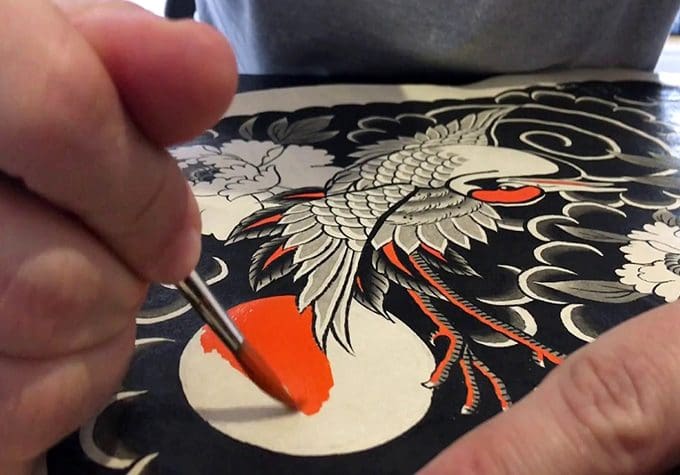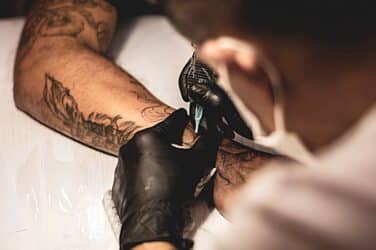words Alexa Wang
If you love tattoos, you must adore Japanese body art. A mainstay in the tattoo community, Japanese tattoos combine beauty and mystery, often representing the many mythological characters in the nation’s history.
However, what comes into mind first when you mention Japanese tattoos is a fire-breathing dragon. Many people are unaware of a wide range of traditional Japanese motifs. Read on to discover them.
Also, if you want to know more about Japanese tattoos and their meaning you should consider apprenticeship. As a tattoo apprentice, you will learn the basics of tattooing such as proper hygiene practices, equipment handling, needle selection, and more. This is an opportunity for those who are passionate about tattooing to learn from experienced and skilled artists. It requires a lot of dedication, hard work, and patience, but it’s definitely worth it.
The tattoo studio in Bern offers a variety of apprenticeship programs, tailored to fit the needs and goals of aspiring tattoo artists. These artists have honed their skills over years of practice and can create stunning traditional Japanese designs or incorporate modern elements into them.

Hebi Irezumi Tattoos
Hebi Irezumi translates into snake tattoo in English. In Japan, snakes have various meanings, including rebirth, change, and transformation, mainly because snakes shed their skin several times in their lifetime.
If the snake is white, it can signify good luck. On the contrary, black serpents are a bad omen. Snake tattoos mostly appear on arms, chest, and shoulders, as these areas best depict the Japanese traditional tattoo art.
Geisha Tattoo
Geishas are an integral part of Japanese history, as they depict beauty, femininity, and grace. Men and women get geisha tattoos to show affiliation to Japanese culture.
Most geisha tattoos are large and intricate, often covering the entire back. You can add other images, like samurai warriors or cherry blossoms, to further intensify the tattoo’s meaning.
Letter Tattoo
Some people prefer getting inked words with phrases whose meanings aren’t so apparent. It’s why tattoos written in foreign languages are popular. In Japan, such tattoos are called Kanji.
Although Kanji is fancy, it has its drawbacks. If you do shoddy research and don’t understand Japanese, you’re likely to get inked with a phrase that doesn’t mean what you intended. Nonetheless, getting a tattoo is an appreciation of Japanese culture.
Fudo Myoo Tattoo
Fudo Myoo is Japanese for Wise King Acala, a Buddhist god ingrained into Japan’s tattooing history when the denominationrolled out across the country. Despite having many interpretations, many agree that Fudo Myoo is a furious protector who overcomes evil to ensure the faithful see the light.
Fudo Myoo has an angry facial expression, wrinkled brows, squinted eyes, and sharp fangs. His hands hold spooky things like nooses and a three-pronged sword.
Namakubi Tattoos
Namakubi tattoos are severed heads that are a tribute to fallen samurai warriors and other heroes in Japan’s history. These gory images also remind people of life’s impermanence.
The heads have multiple blood spots; other details include arrows, daggers, and rope. Namakubi tattoos originated during the feudal era in Japan when wars and rituals like Hari Kari were frequent. Hari Kari, also called Seppuku, entailed self-evisceration followed by execution. Namakubi tattoos are a frightening reminder of courage, overcoming fear, and respect.
Jorogumo Tattoos
Jorogumo tattoos, the Japanese spider woman, have a fascinating history with many interpretations. Some are specific to Japan’s geography and location.
Jorogumo is a ghoul that transforms from a spider woman into a beautiful lady who lures victims with her attractiveness. However, some Jorogumo tattoos pay homage to the Kashikobuchi falls in Sendai. Locals worship the demon for her ability to prevent water disasters. Regardless, she still maintains her dark side.
Hou-ou Tattoos
Hou-ou, also called Phoenix tattoos, symbolise imperial households in Japan. It’s why such drawings depict imperial characteristics like obedience and justice.
The phoenix also sometimes has contradicting meanings, as it can signify harmony, disharmony, auspiciousness, and bad luck. Most phoenix tattoos appear on the back because it’s the only part large enough to accommodate the drawing.
Wrapping Up
Japanese people find it flattering when foreigners get their tattoos. However, it’s disrespectful and unwise to get inked in something whose meaning you don’t understand. Since the art draws your attention, understand its meaning before getting it on your body.









